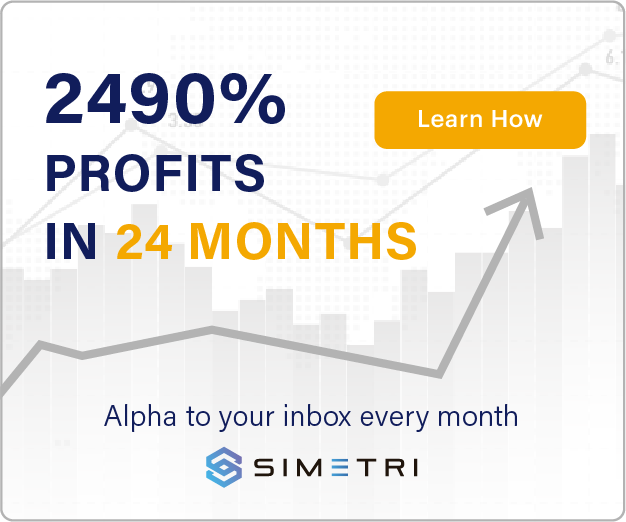
Key Takeaways
- Cryptocurrencies are volatile, which presents risks when investing.
- Employing hedging strategies can minimize the risk of investing in crypto.
- Earning yield, allocating to larger projects, and storing assets safely can reduce the risks associated with crypto investing.
Crypto investors can employ a number of strategies to minimize the risks associated with participating in the space.
A Guide to Hedging in Crypto
Many cryptocurrencies have hit new all-time highs in recent weeks, while trading volumes have been soaring throughout the year. The crypto space is experiencing its biggest bull run to date, and while many believe that the cycle could continue for at least a few more months, the market’s future moves are impossible to predict.
During market peaks, optimism can affect rational decision making. Investors may be tempted to double down with leverage or neglect risk management strategies as prices increase, which can have dramatic consequences during a downturn.
Crypto’s “HODL” mindset, which advocates for holding onto all investments without ever selling, may not be the optimal strategy for everyone. For those who want to succeed in the crypto market, there are several tried-and-tested strategies that can be used to hedge portfolios.
Dollar Cost Averaging
Perhaps the simplest way to manage risk in the market is by simply taking profits. However, there is risk in selling. Exiting the market too early could mean missing out on huge gains if prices continue to climb. That’s where the popular “Dollar Cost Average” (DCA) strategy comes into play. DCA involves incrementally buying or selling an asset rather than deploying capital in one purchase or selling the entirety of one’s holdings. DCA is particularly useful in volatile markets like crypto.
DCA helps manage price action uncertainty; it’s useful for deciding when to sell. Rather than attempting to identify the top of the bull market, one can simply sell in increments as the market rises.
Many successful traders implement the strategy in one form or another. Some use DCA to buy crypto with a portion of their paycheck every month, while others may make purchases daily or weekly. Centralized exchanges like Coinbase offer tools to automatically employ a DCA strategy.
Historically, crypto bear markets have offered the best times to accumulate assets. Bull markets, meanwhile, have offered the best times to sell. DCA is therefore best utilized when the cyclical nature of the market is factored in.
Yield Farming and Staking
The advent of DeFi and stablecoins has offered a way for investors to earn yield on their portfolio. Holding a portion of one’s holdings in stablecoins offers a way to capture the lucrative yield farming opportunities while reducing exposure to market volatility. DeFi protocols such as Anchor and Curve Finance are known to offer double-digit yields, while the rates offered in other newer liquidity pools can be significantly higher (newer yield farms are also considered riskier).
Staking crypto tokens is another effective method of generating passive income. As staked assets appreciate in price, so do yield returns. Meanwhile, liquid staking through projects such as Lido Finance offers a way to earn yield through tokens representing staked assets. If the asset decreases in price, staking allows the holder to continue earning interest on the asset.
On-chain and Technical Analysis
While trading and technical analysis requires a level of knowledge and skill, learning the basics can be useful for those who are looking to get an edge in the market. That’s not to say that one needs to buy expensive trading courses or spend time making short-term trades. However, it can be useful to know a few key indicators such as moving averages to inform decisions such as when to take profits.
Many tools also offer ways to analyze on-chain activity such as whale accumulation and funding rates. Other types of technical analysis include finding the “fair value” of assets. It can also be useful to analyze the overall picture of the market from a macro perspective as there are so many factors that can influence the market. For example, ahead of crypto’s Black Thursday event, fears surrounding Coronavirus indicated that markets could be preparing for a major selloff.
Storing Assets and DeFi Cover
One of the most important aspects of protecting crypto relates to storage. It’s crucial to use the right kind of wallet and safeguard private keys. Cold wallets such as hardware wallets are recommended for significant portions of funds, while hot wallets such as MetaMask are generally not considered the best place to store crypto.
While investors often lock assets such as ETH in smart contracts to leverage DeFi opportunities, there are ways to get protection against hacks and other risks. Projects such as Nexus Mutual, which resembles insurance for DeFi, offer ways to hedge risk on crypto portfolios by selling cover against exchange hacks or smart contract bugs.
Portfolio Construction
Portfolio construction is another important aspect of managing risk. Choosing what assets to buy and at what quantities can have a great impact on the overall risk level of a portfolio. It’s important to consider the amount invested in crypto relative to other assets and savings accounts. Moreover, selecting the right crypto projects to invest in is a crucial part of managing risk. Similarly, for those who trade assets, it is important to distinguish the proportion of a portfolio that can actively be used for trading.
As a general rule, it is worth considering the market capitalization of each asset in a portfolio. While major cryptocurrencies like Bitcoin and Ethereum are volatile, they are considered less risky than many lower cap projects as they are more liquid and benefit from Lindy effect. However, projects with lower market caps can also yield greater returns. Portfolio construction ultimately depends on the risk appetite, financial goals, and time horizons of each individual. The historical data shows that investing in larger cap projects can be profitable on a long time horizon.
Portfolio allocation also pertains to different types of assets. This year’s NFT explosion has yielded great returns for many collectors who participated in the market, but NFTs are less liquid than most other crypto tokens. NFTs are not interchangeable, whereas assets like Bitcoin and Ethereum trade at almost the same price across every exchange. This can also make it harder to find a buyer at a set price when interest in the market dries up. As NFTs are an emergent technology in a nascent space, investing in them is still very risky.
Buying Options
Options are a type of derivative contract that give buyers the opportunity to buy or sell an asset at a set price. For those who are long on a crypto portfolio, put options can be an effective way to hedge risk. Put options offer the right to sell an asset at a determined price in a determined time frame. This allows investors to protect their portfolio by going short in case of a downswing in the market.
Conversely, call options offer an opportunity to buy as asset at a set price in the future, and are effectively a type of long bet. If an investor takes profits early in case of a downturn, holding call options can allow them to buy back in at a certain price if they believe that the market is likely to rally in the future. Options are a complex product that are only recommended for advanced traders and investors, but they can yield lucrative returns for users.
In conclusion, crypto investing can offer huge returns. Historically, crypto has offered outsized upside potential unmatched by any other asset in the world. Fundamentally, though, more potential reward comes with more risk. Employing a variety of hedging strategies can help minimize the risk and increase the rewards the space offers.
Disclosure: At the time of writing, the author of this feature owned BTC, ETH, and several other cryptocurrencies.
















